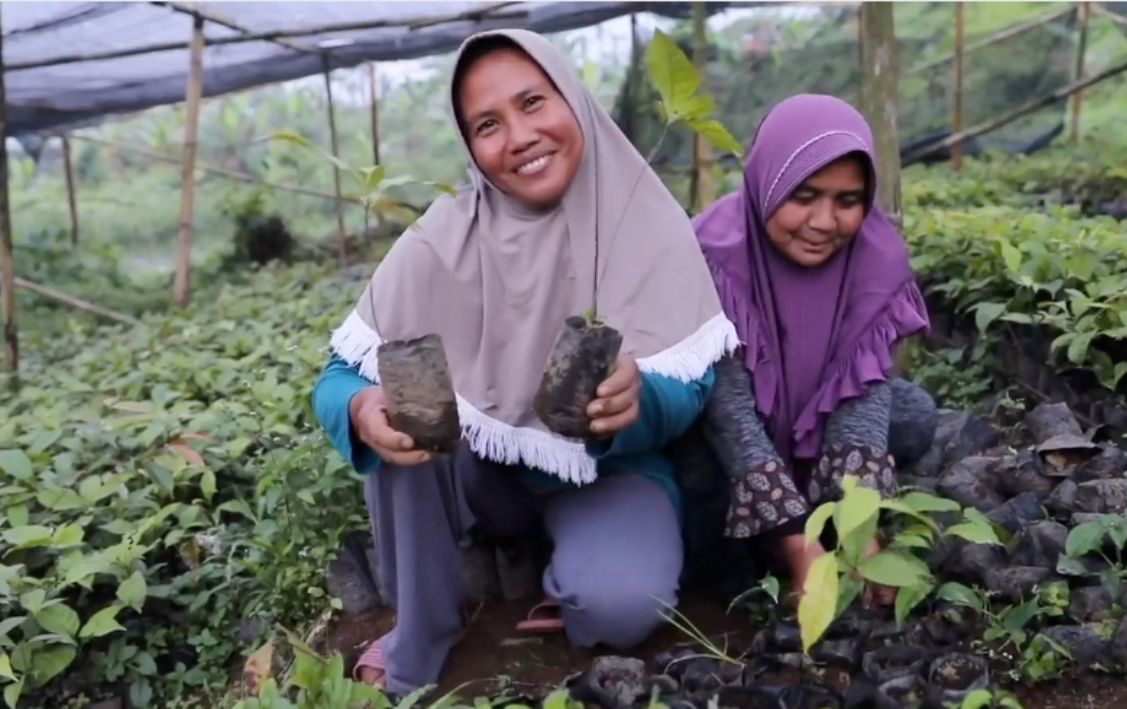
Last April, we published insightson the application of the performance-based payment policy in Costa Rica. We now delve into our second country-specific piece in a sequence of blogs spotlighting the use of this initiative on a national level, outlining lessons learned from the application of PBP in Indonesia.
Indonesia´s REDD+ Results-Based Payments (RBP) project, completed its First Performance Based Payment(PBP) Cycle by the end of 2022, resulting in a payment of US $ 46 Million to the Indonesian Environment Fund (IEF) under the Ministry of Finance. This is a significant step forward for UNDP, as it’s one of the largest single transactions made to a government outside of a crisis setting.
These funds support extending and enhancing the implementation of Social Forestry and Forest Management Units, contributing to the double objective of sustainable forest management and rehabilitation, as well as community empowerment and poverty alleviation. In a significant stride, the PBP Agreement alongside its Validation Methodology (VM) was agreed in October 2022. This agreement paves the way for assessing the results achieved by the Ministry of Environment and Forestry (MoEF) since 2021, employing a pre-defined collection of Key Performance Indicators (KPIs), encompassing Quality Indicators and Social and Environmental Safeguards Indicators.
A set of 7 lessons were identified in the case of Indonesia. These lessons could apply to other REDD+ Results-Based Payment projects, as well as the application of UNDP’s PBP instrument in other settings across different sectors:
Align the KPIs to existing national priority programs and policies.
Social forestry, forest and peatland rehabilitation and restoration, as well as forest fire management form the backbone of the country’s Forest and Other Land Use (FOLU) Net Sink 2030 Operational Plan, which is a pivotal component of Indonesia´s enhanced Nationally Determined Contributions (NDC). Using these priority programs as the basis of the KPIs ensured a strong national ownership of the PBP-A, given the direct link to what the country has committed to achieve nationally and internationally. Furthermore, these programs have also benefitted from pre-investments made through existing but limited national government resources. In turn, this ensured there are existing national mechanisms and results through which the PBP-A could further incentivize.
Connect KPIs to existing national indicators already in use to inform institutional annual workplans and timelines.
This is particularly relevant to reach large scale and faster delivery of results through the implementation of the PBP-A. When KPIs and corresponding Means of Verifications are consistent with the counterpart´s implementation plans, then there is higher probability to deliver the expected results. Nonetheless, there is a delicate balance between national aspirations and leveraging the full potential of the PBP-A to drive towards higher, more ambitious targets.
Ensure early and sustained engagement of the Independent Assessor (IA).
Every independent assessment provides key and useful ground-based recommendations, not only for PBP-A implementation, but also for the institutional programs supported by the PBP-A (MoEF’s programs in this case). Therefore, careful consideration shall be given to the procurement process to select and hire the IA, so there is confidence in its quality and ability to commit in the long-term. The IA should also be engaged early in the process, i.e., no later than discussing the details of the PBP-A and developing the VM. Given Indonesia’s complex biophysical and socio-cultural dynamics, ensuring knowledgeable and experienced local experts within the IA team was also key for the assessment process.
Allow enough time for every step of the PBP-A development and independent assessment process. Both the details of the PBP-A and VM require lengthy discussions until agreement is reached among PBP-A signatories and other relevant stakeholders. Depending on the complexity of the programs being targeted by the PBP-A and the specific circumstances of their implementation, this process can take over a year. For Indonesia, this required different directorates in MoEF to fully understand the requirement to disclose data and information needed to review each KPI’s verifiers, and ultimately, be able to confirm the achievement of results. Similarly, the independent assessment process should be sequenced and planned in a way that enough time is allocated for desk review, followed by planning field data collection, and carrying out field work, interspersed with an on-going feedback loop with UNDP, IEF, and MoEF.
Provide extensive technical details in the VM to avoid discrepancies.
Technical descriptions should be included in the VM to the extent that there is no room for broad interpretation which could lead to discrepancies in the independent assessment process affecting the results and conclusions reached by the IA. All signatories of the PBP-A and relevant stakeholders, including the IA, should agree on these provisions. Although discrepancies did not happen in Indonesia, the first independent assessment process revealed that some elements of the VM would allow different interpretations. These ambiguities are under revision prior to the second payment cycle.
Plan for sufficient technical assistance to ensure robust social and environmental safeguards assessment and implementation.
While linking KPIs to existing national priority programs and indicators can fast-track delivery of results, including social and environmental safeguards provisions in the PBP-A required the IA to prepare additional tools and procedures to collect and assess this information. Learning from the first independent assessment, the exercise of identifying existing gaps and extending technical assistance was important to strengthen social and environmental safeguards in social forestry, forest and peatland rehabilitation and restoration, as well as forest fire management.
Use a stepwise approach to incentivize and strengthen social and environmental safeguards results.
While one of the key innovations of the PBP-A is the ability to link safeguards elements to KPIs, an incremental approach is needed to improve and incentivize stronger social and environmental results in subsequent requests for PBP. For instance, Indonesia included additional indicators to reward a range of good performance for gender safeguards in the KPI.
This blog is part of a set of articles (such as Costa Rica, and upcoming Ecuador) which provide guidance and lessons learned on how the PBP-A can allow channeling high volumes of finance to the rural grassroots, marking a paradigm shift in development assistance.



